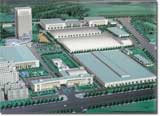| |
|
| |
|
 |
Supply
Chain by the Numbers |
| |
|
| |
- Dec. 20, 2013
|
| |
|
| |
|
| |
|
| |
US Manufacturing Inches Towards Pre-Recession Levels; Ford Learns Its Risk is in the Small Things; A New Route from China to Europe? China Hopes if They Build It Manufacturers Will Come |
| |
|
| |
| |
| |
|
|
|
Number of days in which goods can move from China to Europe – using intermodal. A growing number of shippers are taking that path, which offers a nice balance for many between low cost but very slow ocean shipping and fast but very expensive air shipments. The two major routes from China are from central China through Kazakhstan and a more northern route via the Trans-Siberian Railway. Even Japanese and South Korean companies are now starting to ship their goods via ocean or air to the Chinese hubs for final transport toward Europe. Major shippers, including HP, BMW, Audi, Volkswagen and Samsung, already have embraced these China-to-Europe rail routes.
|
| |
| |
|
| |
| |
| |
40% |
 |
Occupancy rates at some 350 industrial parks in China, according to a recent government study. Yet, despite that state of affairs and growing over capacity in many industrial sectors, local governments keep investing in such projects, as the only path they see to continued growth. "Build it and they will come," seems to be the idea, according to an article this week in the Wall Street Journal. The city of Shiyan, for example, is spending $2 billion to blow up large hills surrounding the city to increase available land for factories by 70%. This expansion strategy may not end well for China, the WSJ says. |
|
| |
| |
| |
|
|
|
| |
 |
 |
| |
|
|
| |